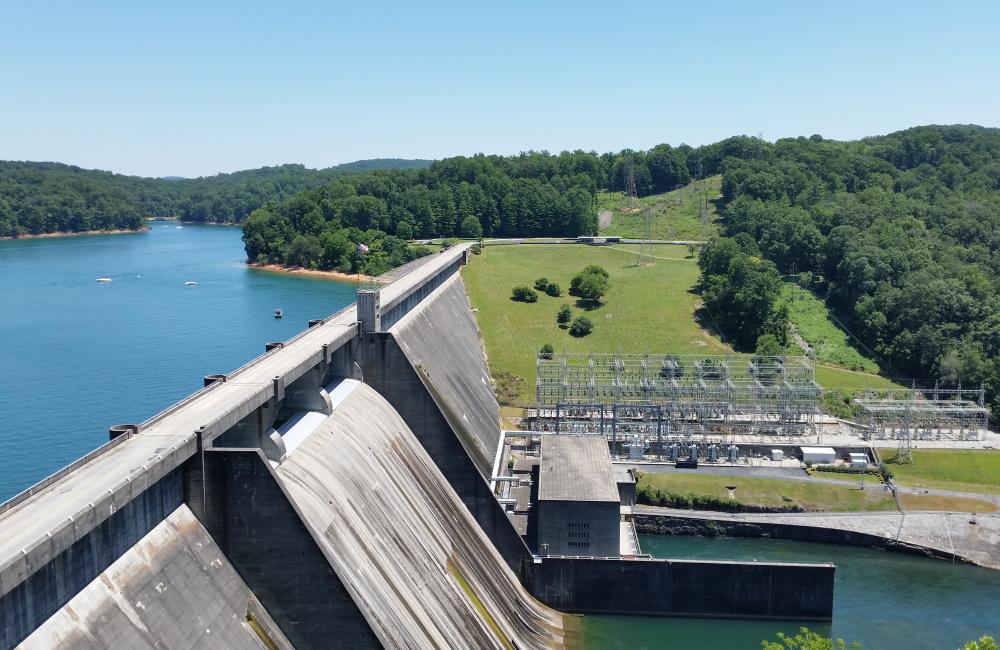A recent report by ORNL researchers sheds light on the process to license hydropower facilities, such as the Norris Dam in Anderson County, TN., pictured here. A better understanding could lead to shorter, more efficient timelines and enable hydropower to play a bigger role in US electricity generation. Credit: Brennan Smith
As a flexible and reliable source of energy, hydropower is expected to play a significant role in US electricity generation, balancing the needs of increasing electrical demand and maintaining a sustainable environment. A recent report by researchers at the US Department of Energy’s Oak Ridge National Laboratory (ORNL) sheds light on the process to license hydropower facilities, which could lead to shorter, more efficient timelines and increased hydropower capacity.
Key findings of the report, developed in conjunction with the National Renewable Energy Laboratory, were published in the March 2022 issue of Energy Policy.
Because a diverse group of entities is involved in the hydropower licensing process, ORNL researchers took the innovative approach to include key stakeholders in the study, representing environmental groups, utility companies, and state, federal, and tribal regulatory agencies. The goal was to better understand perceived obstacles from each vantage point and create a base level from which to work toward removing these barriers.
Together, the group studied 107 licenses to identify timelines for acquiring new hydropower licenses and renewing existing ones, and to identify factors that could affect the timeline.
“Water is a public trust,” said Brenda Pracheil, ORNL biodiversity and ecosystem scientist and lead researcher on the study. “To enable a clean energy transition, it is imperative that we all work together to provide the framework for advancing hydropower capabilities while continuing to protect our precious environmental resources,” she said.
The study’s findings by Pracheil and fellow ORNL researchers Rocio Uria-Martinez and Megan Johnson demonstrated that licensing timelines varied depending on several factors. Hydropower projects with greater environmental concerns predictably took longer to approve, and approving new projects often took less time than renewing existing licenses.
On average, licensing new projects takes 5 years, and license renewals can take up to 7.5 years. Although seemingly contrary to expected results, many variables are at play. Existing sites can continue to generate electricity while awaiting licenses, which places the emphasis on quickly approving licenses for new projects that are on hold until licenses are received. And new projects have the benefit of selecting site locations with fewer environmental issues or endangered species, which could also lead to shorter license timelines.
In addition to reviewing these variabilities, ORNL researchers examined potential differences in license timelines based on one of three license processes selected: traditional, integrated, or alternative licensing. Initial findings show that the integrated licensing process may shorten license timelines but may require more resources. Further study is needed to evaluate long-term impacts of each.
“It can take a long time to increase the reliability of our electrical grid,” said Pracheil. “In the meantime, we now have the quantifiable data necessary to begin to remove barriers to greater hydropower generation and storage.”
ORNL is managed by UT-Battelle LLC for DOE’s Office of Science, the single largest supporter of basic research in the physical sciences in the United States. DOE’s Office of Science is working to address some of the most pressing challenges of our time. For more information, please visit https://energy.gov/science.





